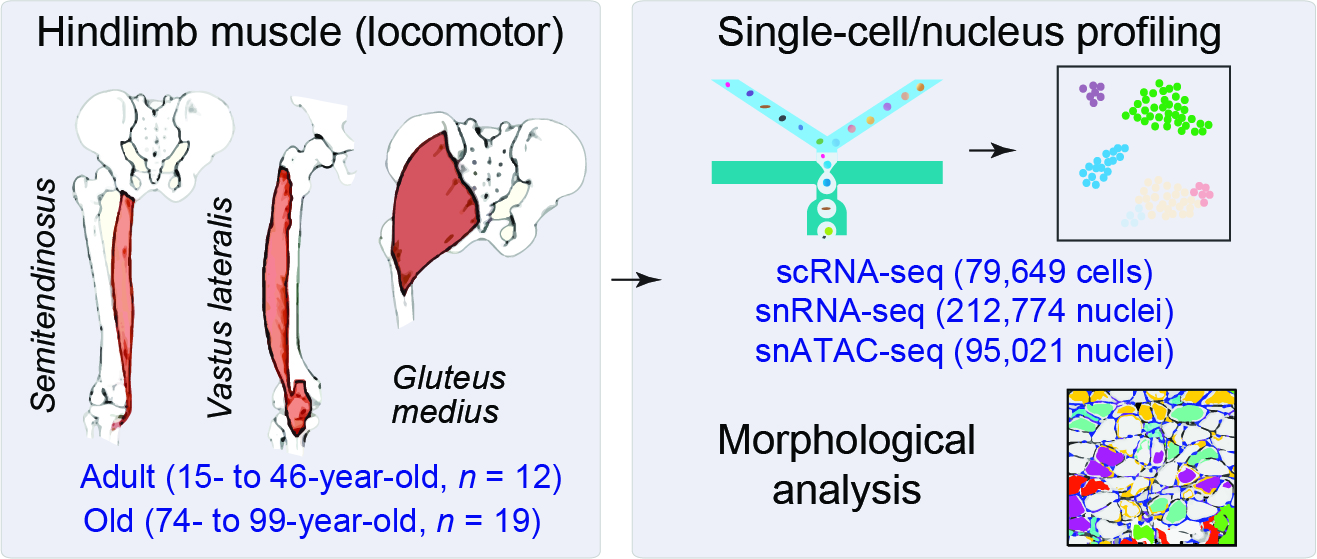HLMA: Human Muscle Ageing Cell Atlas




Muscle atrophy and frailty are common manifestations of sarcopenia and are critical contributors to morbidity and mortality in the elderly. Deciphering the molecular mechanisms underlying sarcopenia has major implications for understanding human ageing. Yet progress has been slow, in part due to the complexity of characterising skeletal muscle niche heterogeneity (with myofibres being the most abundant) and of obtaining well-characterized human samples. Here, we have generated a single-cell/single-nucleus transcriptomic and chromatin accessibility map of human limb skeletal muscles encompassing over 387,000 cells/nuclei from individuals ranging from 15 to 99 years of age with distinct fitness and frailty levels. We describe i) how cell populations change during ageing, including the emergence of new populations in the elderly, and ii) the cell-specific and multicellular network features (at the transcriptomic and epigenetic levels) associated with these changes. Based on cross- comparison with genetic data, we also identify key elements of chromatin architecture that mark susceptibility to sarcopenia. Our study provides a basis for the discovery of novel targets in the skeletal muscle that are amenable to medical, pharmacological and lifestyle interventions in late life.
How to cite
Lai, Y., Ramírez-Pardo, I., Isern, J. et al. Multimodal cell atlas of the ageing human skeletal muscle. Nature (2024). https://doi.org/10.1038/s41586-024-07348-6



